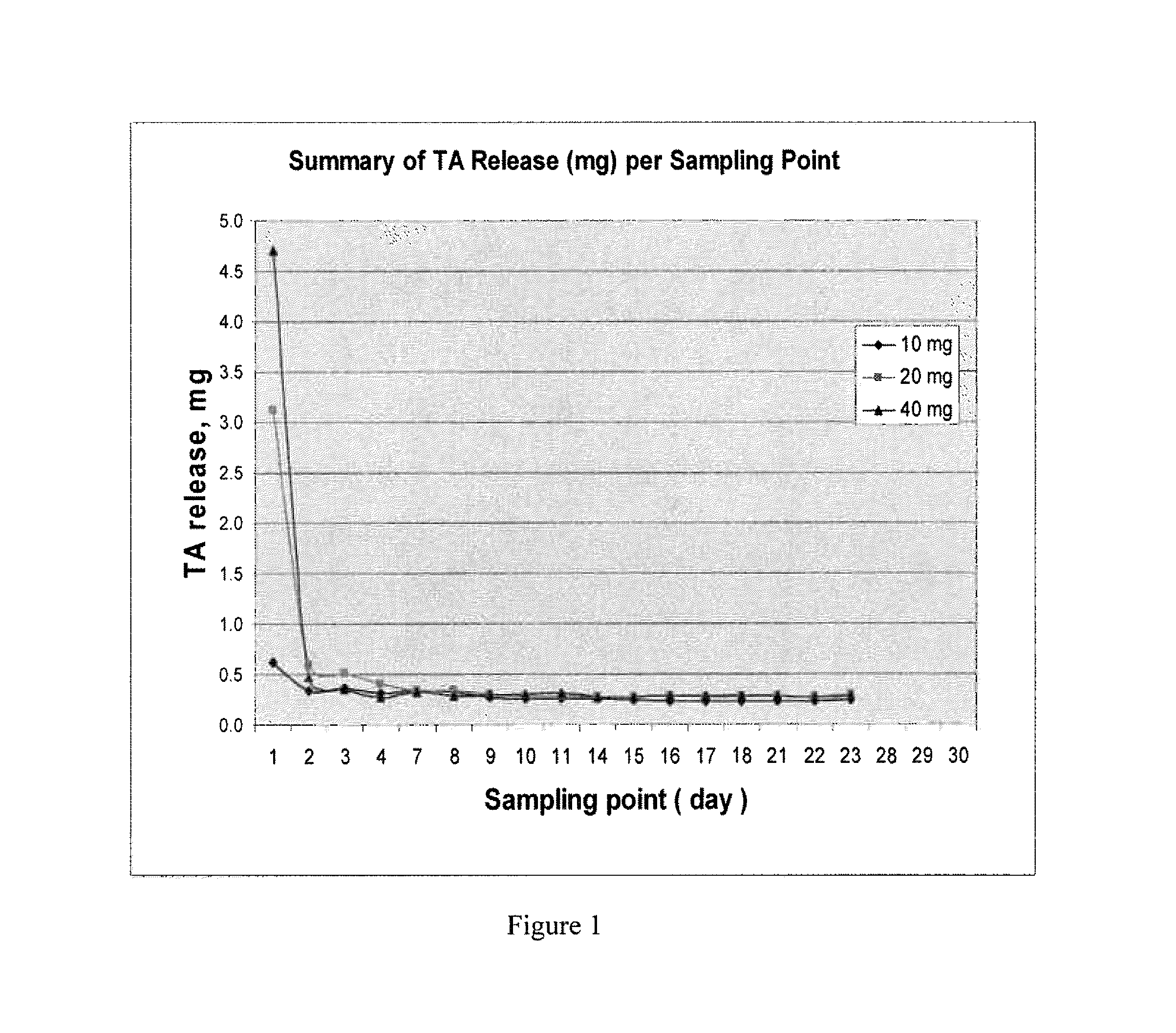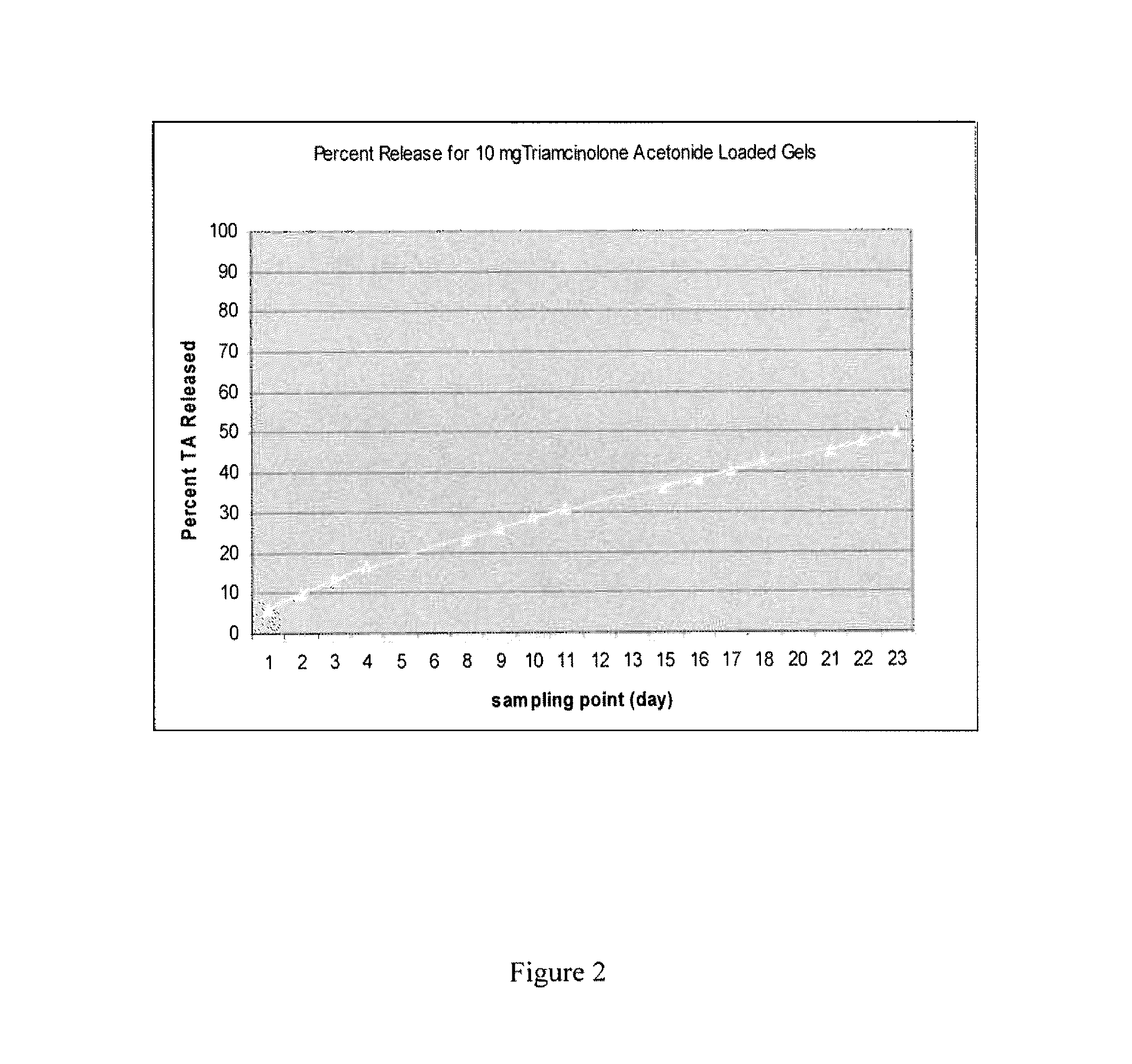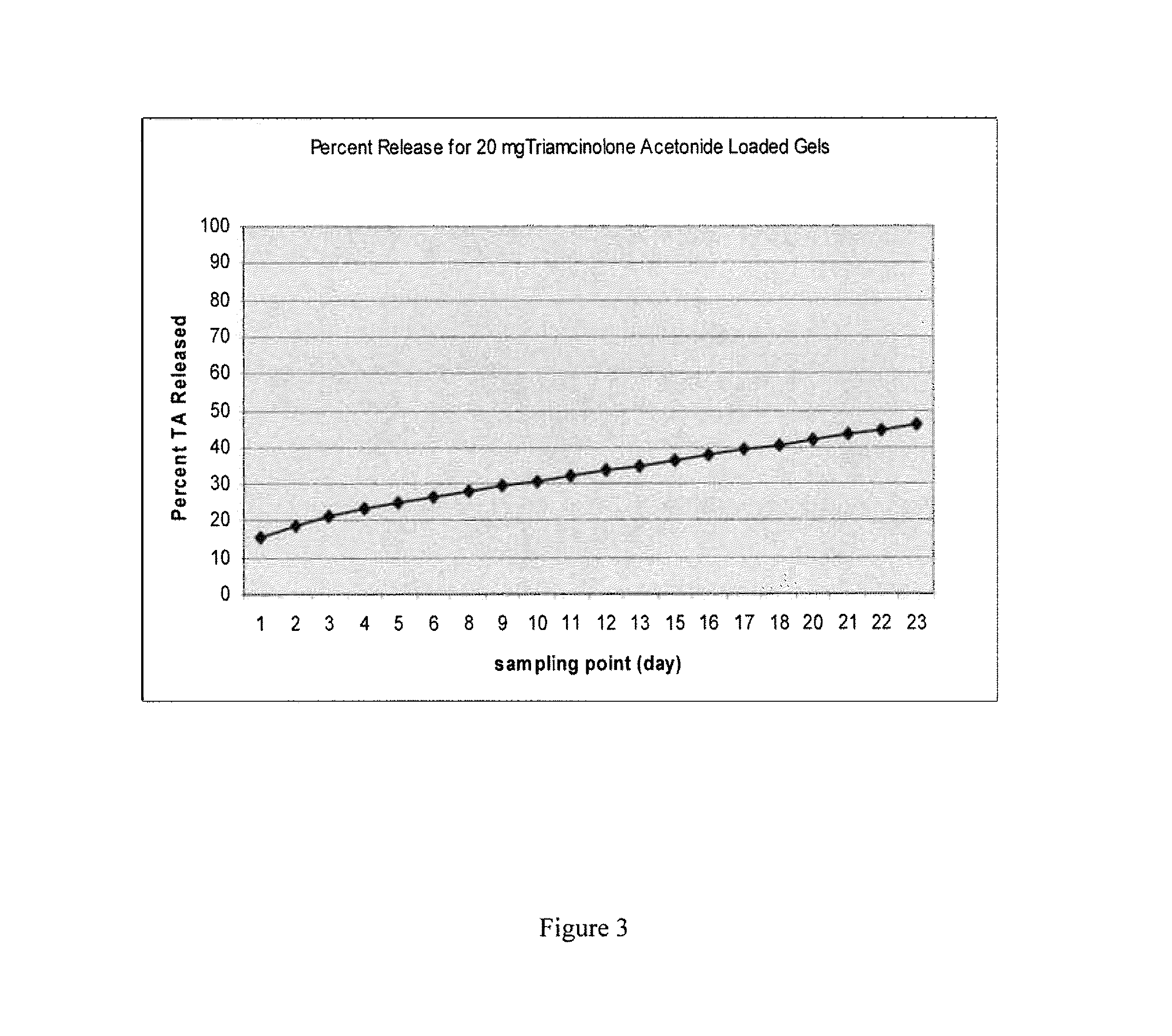Polymer formulations for delivery of bioactive agents
a technology of bioactive agents and polymers, applied in the field of polymer formulations for the delivery of bioactive agents, can solve the problems of increased risk of infection, unsatisfactory side effects, and associated stability and drug loading capacity
- Summary
- Abstract
- Description
- Claims
- Application Information
AI Technical Summary
Benefits of technology
Problems solved by technology
Method used
Image
Examples
example 1
Synthesis of Carboxymethyl-Hyaluronic Acid (CM-HA or Carbylan™)
[0260]Aqueous NaOH solution (200 ml, 45% w / v) was added to a 500 mL beaker and was stirred (magnetic stirrer) at ambient temperature. Hyaluronic acid powder (20 g) [Novozymes, Mw 0.8-1.0 million] was added to a 500-ml beaker. After standing for 2 hours, the hyaluronic acid mixture was transferred into a 4 L beaker with 1,500 ml isopropanol and a Teflon-coated magnetic stir bar, and then a solution of 20 g of chloroacetic acid in 500 ml isopropanol was added with magnetic stirring. After stirring for 1 hour at ambient temperature, the stirring was stopped and the material was allowed to settle for approx. 10-20 minutes. As much of the supernatant as possible was aspirated from the mixture. 1,000 ml of distilled water was added to the resultant mixture. Once dissolved, the solution pH was adjusted to ca. pH 7.0 by adding 6.0 N HCl. The solution is then made up to 2 L using DI water. The solution was purified by tangential ...
example 2
Synthesis of Carboxymethyl-Hyaluronic Acid-Dithiobis (Propanoic Dihydrazide (CM-HA-DTPH or Carbylan™-S)
[0261]3,3′-Dithiobis (propanoic dihydrazide) (DTP) was synthesized as described before. (Vercruysse, K. P.; Marecak, D. M.; Marecek, J. F.; Prestwich, G. D. “Synthesis and in vitro degradation of new polyvalent hydrazide cross-linked hydrogels of hyaluronic acid.”Bioconjugate Chem. (1997) 8:686-694; Shu, X. Z.; Liu, Y.; Luo, Y.; Roberts, M. C.; Prestwich, G. D. “Disulfide crosslinked hyaluronan hydrogels.”Biomacromolecules (2002) 3:1304-1311). DTP (16.7 g, 0.07 mol) was added to the Carbylan™ solution prepared above, and the solution pH was adjusted to 4.75 by adding either HCl or NaOH solution. Then, 6.72 g (0.035 mol) 1-ethyl-3-[3-(dimethylamino)propyl]carbodiimide (EDC) [Sigma-Aldrich] was added, and the solution pH was maintained at a pH of 4.75 by adding 6.0 N HCl with continuous magnetic stirring at room temperature. After 4 h, 50 g of dithiothreitol (DTT) [Biovectra] was add...
example 3
Preparation of the Lyophilized Thiol Functionalized Hyaluronic Acid with Excipients
[0262]The excipient stock solution was made by dissolving 2 ml of 500 mM EDTA, 10 g of Ascorbic Acid, 10 g of Sucrose and 154.25 mg DTT in 100 ml of 10×PBS. A specific amount of Stock Carbylan™-S (17.5 mg / ml÷Stock Carbylan™-S Conc.*1000, g) was mixed with the excipient stock. The final Carbylan™-S / excipient / cysteine volume was made up to 1 liter using DI H2O. The solution pH was then adjusted to pH 3.0 with 6N NaOH. The Carbylan™-S / Excipient / cysteine solution was mixed with 250 ml of 40 mg / ml PEG (2000≦Mw≧4000). 3 ml of resultant solution was placed into a Teflon mold (100 wells of 3 ml volume) using a repeater pump. The solution in the mold was then lyophilized using a Millrock lyophilizer (Table 1). At the end of the lyophilization cycle the sponges are removed from the mold and are stored in a dry box under nitrogen. The sponges are placed in 5 ml plastic syringes, pouched with a N2 / vacuum cycle an...
PUM
 Login to View More
Login to View More Abstract
Description
Claims
Application Information
 Login to View More
Login to View More - R&D
- Intellectual Property
- Life Sciences
- Materials
- Tech Scout
- Unparalleled Data Quality
- Higher Quality Content
- 60% Fewer Hallucinations
Browse by: Latest US Patents, China's latest patents, Technical Efficacy Thesaurus, Application Domain, Technology Topic, Popular Technical Reports.
© 2025 PatSnap. All rights reserved.Legal|Privacy policy|Modern Slavery Act Transparency Statement|Sitemap|About US| Contact US: help@patsnap.com



